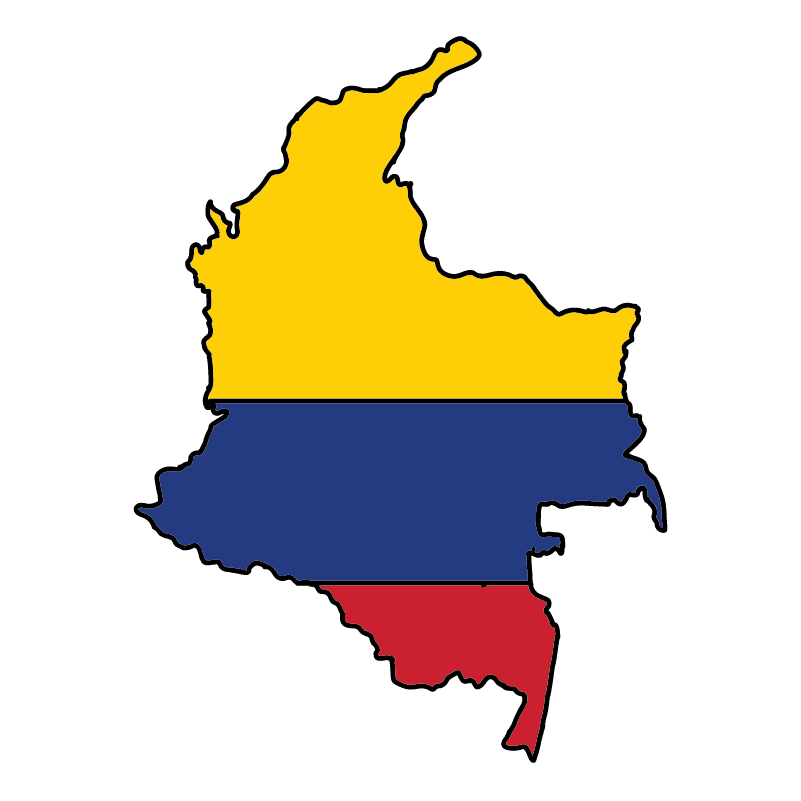Colombia, often hailed for its stunning landscapes and vibrant culture, is a land where roses bloom not just in gardens but also in the hearts of its people. Beyond their captivating beauty and fragrant charm, the rose has played multifaceted roles in shaping the history, culture, economy, art, and literature of Colombia. In this article, we’ll take a delightful journey through the various dimensions of roses in Colombia and discover why they are truly indispensable.
HISTORICAL ROOTS
The history of roses in Colombia is a fascinating journey that spans several decades. Among its historical treasures are the rose gardens built within several botanical parks in the country. For example, the stunning 20-hectare Botanical Garden of Bogota is home to a myriad of diverse plant species—roses included. Colombia’s history with roses has transformed the country into one of the world’s leading producers and exporters of roses.
Colombia’s rose industry started in the early 1970s with the arrival of a few Dutch and Israeli entrepreneurs. They discovered that the country’s climate and geography were ideal for growing roses. The first rose crops were in production in the 1980s, and since then, the industry has continued to grow. This is when the Colombian government recognized the potential of flower exports by actively promoting and supporting the flower industry. This included initiatives such as tax incentives and improved infrastructure for flower transportation.
Today, Colombia is the world’s second-largest exporter of cut flowers after the Netherlands, and roses are the country’s most crucial flower crop. The rising demand for Colombian roses has brought challenges that call for standard and sustainable methods. Over the years, Colombian rose farms have adopted sustainable and environmentally friendly practices. Many rose farms in Colombia have received certifications such as Florverde, which ensures that roses are grown with respect for the environment and the well-being of workers.
CULTURAL SIGNIFICANCE
The celebration of flowers in Colombia has a lengthy history that dates back to the indigenous population. Specifically, roses have found a significant place in Colombian traditions and celebrations like weddings, festivals, and funerals.
Roses are also given as flower gifts to women especially on Valentine’s Day and Mother’s Day. On these days, it is expected that one should give a rose to a loved one or a friend. They’re not just flowers; they’re expressions of love, passion, and unity. Another tradition that Colombians love to take part in is taking baths with fresh flowers, especially roses. In the city of Medellín, people celebrate “Feria de Las Flores” or Flower Festival annually. In detail, the city showcases a magnificent display of flowers including roses, as a tribute to the city’s vivid culture and blooming industry.
ECONOMIC IMPACT
Colombia’s flower industry, which started in the 1970s with roses in the 1980s, is now the world’s second-largest flower exporter after the Netherlands. It’s a significant part of Colombia’s economy, employing many and generating substantial revenue. The majority of Colombian roses are exported, with nearly 80% going to the United States, where they dominate the flower market due to their quality and variety.
Colombian rose growers succeed against global competition thanks to favorable conditions, technology, and skilled workers. Colombia’s proximity to the United States makes it a favored source of fresh-cut flowers. Additionally, there’s a strong domestic market for roses in Colombia, especially for special occasions.
The Colombian government promotes the domestic flower market by using flowers in public spaces and cultural events like the Medellin Flower Fair, which showcases Colombia’s flower industry globally. Overall, Colombia’s rose industry is integral to its economy and culture and is poised for future success.
Artistic & Literary Influence
Roses have long been a muse for Colombian artists and writers. From poetry to painting, they’ve inspired creativity in various forms.
Roses have been a popular subject in Colombian art for centuries. The flower’s vibrant colors and delicate petals have inspired artists to create beautiful paintings and sculptures. One of the most famous Colombian artists, Fernando Botero, has included roses in many of his works. His paintings often feature large, voluptuous figures surrounded by flowers, including roses. The flower’s beauty and elegance have made it a popular subject for other Colombian artists as well.
Roses have also played an important role in Colombian literature. The country’s most famous writer, Gabriel Garcia Marquez, often included roses in his novels and short stories. In his novel “Love in the Time of Cholera,” the protagonist, Florentino Ariza, sends his love interest, Fermina Daza, a bouquet of roses every day for over 50 years. The roses become a symbol of his undying love and devotion. Roses have also been featured in the works of other Colombian writers, including Alvaro Mutis and Jose Asuncion Silva.
Roses in Colombia
Colombia is known for its vibrant and diverse rose industry, producing a wide range of colors and varieties. Here are some of the most popular Colombian rose varieties:
- Orange Crush®: This variety is known for its bright orange color and large bloom size. It has a long vase life and is a popular choice for bouquets and arrangements.
- Frutteto®: Frutteto roses are a beautiful shade of pink with a hint of peach. They have a classic rose shape and a delicate fragrance.
- Super Sun®: As the name suggests, Super Sun roses are a bright and sunny yellow color. They have a long vase life and are a popular choice for summer weddings and events.
- Snow Bliss®: These pure white roses have a large bloom size and a classic rose shape. They are a popular choice for wedding bouquets and centerpieces.
- Pink and Dark X-Pression®: These tea hybrid roses have a unique garden rose opening and come in shades of pink and dark red. They have a long vase life and are a popular choice for romantic occasions.
In addition to these popular varieties, Colombian rose farms produce many other colors and shades, including reds, pinks, whites, yellows, and greens. Colombian roses are known for their high quality and long vase life, making them a popular choice for florists and consumers around the world.
Conclusion
In Colombia, roses are not just flowers; they are an integral part of the nation’s identity. The rose weaves itself into the fabric of the history, culture, economy, art, and literature of Colombia. They represent love, unity, and the vibrant spirit of a nation that continues to blossom like the petals of a rose. Roses in Colombia are a living testament to the enduring beauty that nature bestows upon us. They remind us that, just like a rose, Colombia is a nation with thorns, but its vibrant colors and fragrant spirit make it a place of extraordinary beauty. So, the next time you see a rose, remember that it’s not just a flower; it’s a piece of Colombia’s heart, a symbol of love, a testament to its history, and a fragrant reminder of its rich culture and literary heritage.
Roses Originating In Colombia
The Rose Directory website library catalogues roses from around the world. If there are any roses originating from this country, you can find a clickable list to explore below. If there are no roses listed, don’t worry – we will continue to add more roses to the catalogue in the future and more may appear then.
No roses found.
EXCLUSIVE Colombia COLLECTION
Visit Store
From Clothes & Apparel To Home Décor & Accessories. Free Returns. Unique Designs. Worldwide Shipping.
